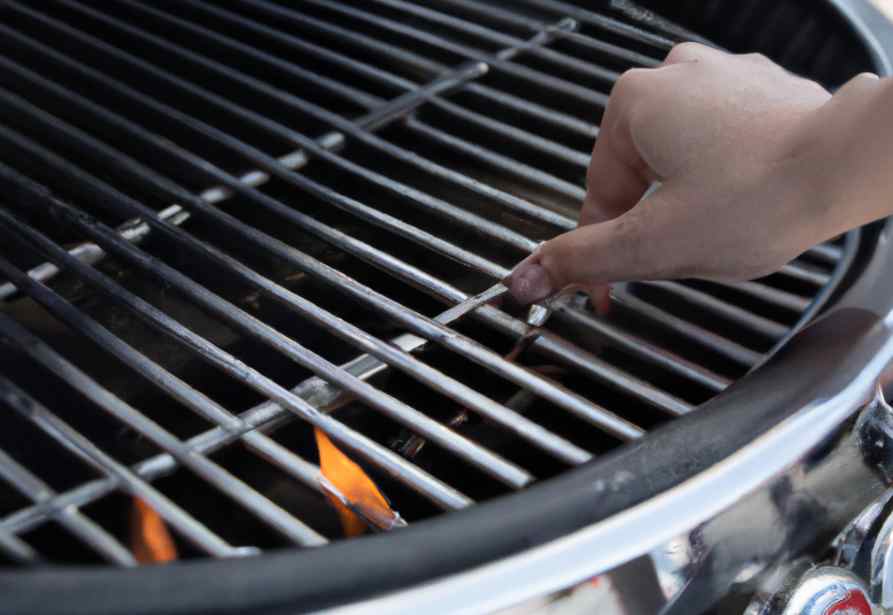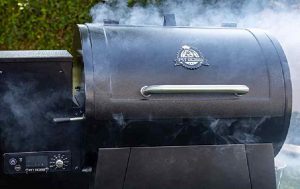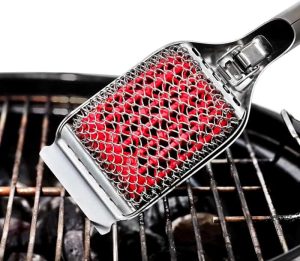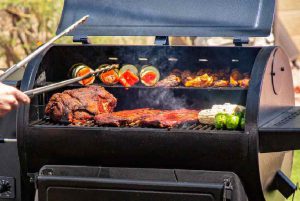Ready to dive into the world of outdoor cooking with a gas grill? You’ve made a fantastic choice!
Cooking on a gas grill is a popular choice due to its ease of use compared to a charcoal grill. Gas grills are perfect for budding backyard chefs, offering a simple, speedy, and mess-free grilling experience.
Even if it’s your first time, you’ll quickly master the art of grilling on these user-friendly wonders.
In this guide, we’ll walk you through the basics of firing up your gas grill and share some essential BBQ tips for beginners.
- How To Start a Gas Grill? (with video)
- Cooking on a Gas Grill: Tips and Technique
- Turning Off a Gas Grill: A Quick Guide
- Mastering Gas Grilling: Tips and Techniques
- Essential Safety Tips for Lighting a Gas Grill
How To Start a Gas Grill?
To ensure a safe and smooth grilling experience, follow these steps while starting your gas grill:
- Always keep the lid open while lighting the grill. This prevents gas from building up inside the cooking chamber and reduces the risk of an explosion.
- If it’s a windy day, have someone hold up a shield or move the grill to a less windy area to prevent the flame or match from being blown out.
- Turn on the gas at the propane tank by opening the valve on top, and turning the knob counter-clockwise until it stops.
- With the lid open, turn on one of the gas burners on the grill.
- If your grill has an igniter button, press it after turning the first burner knob all the way up. If your grill doesn’t have an ignition button, use a long fireplace match or a lighter wand to light the initial burner.
- Turn the other burners to high once the first one is lit.
- Close the lid and let the grill preheat for 10-15 minutes before cooking.
- Remember, always refer to your grill’s instruction manual for specific lighting instructions.
If the manual is unavailable, these general steps will help you start your gas grill safely and efficiently.
Related >> How to Light a Gas Grill (Causes and Solutions)
You can also watch a video about “How To Start a Gas Grill” below:
Cooking on a Gas Grill: Tips and Techniques
Once your gas grill is preheated, you’re just a few steps away from cooking up a delicious meal.
Here’s how to make the most of your grilling experience:
Clean the cooking surface:
Use a grill brush, wooden grill scraper, or a wad of aluminum foil to remove any debris from the previous cookout.
To reduce sticking, dampen a paper towel with vegetable oil and use tongs to glide it along the hot grilling grate before placing food on it.
Arrange your food:
Place your food items on the grill evenly, leaving enough space for turning and flipping. This extra space also allows for rearranging pieces to ensure even cooking.
Choose the right cooking method:
You can cook on a gas grill using direct heat or indirect heat.
Direct heat is ideal for small, tender items that cook quickly, such as hamburgers, steaks, chops, boneless chicken pieces, fish fillets, and sliced vegetables.
Indirect heat is best for large cuts of meat that require more than 20 minutes of grilling time or delicate foods that could dry out or scorch with direct heat.
Examples include roasts, bone-in poultry pieces, whole fish and delicate fish fillets, whole chickens, and ribs.
You can also use indirect heat to finish cooking thicker or bone-in items seared over direct heat.
Keep the lid closed:
Resist the temptation to frequently open the grill lid, as this allows hot air and smoke to escape, increasing the cooking time.
Be patient when turning food:
Don’t disturb the food until it’s ready to turn. Give it a nudge with a spatula or tongs – if it releases from the grill easily, go ahead and flip it. If it sticks, wait a couple of minutes for the exterior to cook a bit longer.
Turning Off a Gas Grill: A Quick Guide
Once your food is grilled to perfection, follow these easy steps to safely turn off your gas grill and maintain it for the next cookout:
Remove and rest the food:
Take the cooked food off the grill, place it on a platter, and loosely cover it with aluminum foil to keep it warm while it rests.
Turn off the burners:
Rotate all burner knobs to the off position.
Close the propane valve:
Turn the propane tank knob clockwise until it stops to shut off the gas supply.
Clean the grill grate:
Utilize a grill brush, scraper, or aluminum foil to remove any leftover residue from the grilling surface.
Protect your grill:
Once the grill has completely cooled down, close the lid and cover it with a grill cover to keep it safe and clean until your next cookout.
Mastering Gas Grilling: Tips and Techniques
As you hone your skills using a gas grill, keep these helpful tips in mind to make your grilling experience enjoyable and efficient:
1. Spare propane tank:
Keep an extra propane tank handy to ensure you don’t run out of gas mid-cook.
2. Smoky flavor:
Soak wood chips in water for 30 minutes before placing them in a foil pouch or smoker box to add extra smokiness to your grilled dishes.
3. Grilling pan:
Use a grilling pan for smaller or delicate foods that might slip through the cooking grate.
4. Flip wisely:
Aim to turn your food just once during the cooking process to ensure even cooking.
5. Season ahead:
Apply dry rubs and marinades well before grilling to maximize flavor.
6. Check for doneness:
Use an instant-read thermometer to confirm that your food has reached a safe internal temperature.
Remember, practice makes perfect when it comes to gas grilling. Don’t hesitate to experiment and enjoy the process.
Have everything set up and ready before you start grilling so you won’t have to keep going back to the kitchen.
Keep your grill’s grates clean, preheat it to the highest setting, and make sure you have enough gas.
For safety’s sake, become familiar with turning off the gas grill.
Essential Safety Tips for Lighting a Gas Grill
Propane gas, commonly used for gas grills, is typically sold in pressurized tanks at various stores.
Although it’s colorless, propane has a distinct smell, similar to rotten eggs or a skunk’s spray.
When gas is escaping the tank, you may also hear a hissing sound due to the pressure.
Stay alert for these signs, as inhaling large amounts of propane fumes can pose risks such as unconsciousness, asphyxiation, or cardiac failure.
While explosions and fires are rare, they can occur if a gas leak encounters a spark or heat source. To minimize risks, follow these best practices from the Hearth, Patio, and Barbecue Association:
- Store the propane tank and gas grill according to the manufacturer’s instructions.
- Regularly inspect your grill and tank for any leaks, cracks, or damage.
- Maintain a safe distance between your gas grill and any combustible materials, such as your home, trees, or fences.
- Keep a fire extinguisher nearby and know how to use it in case of emergencies.
- Never leave the grill unattended while it’s in use.
- Teach children and pets to stay away from the grill area.
By following these safety tips and proper storage guidelines, you can ensure a safe and enjoyable grilling experience.
To ensure a safe and enjoyable grilling experience, it’s essential to store your propane tank and gas grill according to the manufacturer’s guidelines.
Additionally, consider following these gas grill safety tips from the Hearth, Patio, and Barbecue Association.
Related >> How to Use Wood Chips on a Gas Grill (3 Easy Steps)
Final Thoughts
Gas grills offer a user-friendly way to enjoy outdoor cooking, and once you’ve mastered the basics, you’ll be firing up scrumptious meals in your own backyard with ease.
Remember to practice safety tips, experiment with different techniques, and most importantly, have fun.
>> Visit our extensive BBQ guides page for more articles that are similar to this one.
Greetings! I’m Chad, a 43-year-old barbecue aficionado hailing from the beautiful state of Texas. I’m thrilled to invite you on a culinary journey as we explore the art of grilling and smoking together. Through this blog, I aim to ignite your passion for barbecue by offering:
Scrumptious, time-honored BBQ recipes passed down through generations, guaranteed to tantalize your taste buds.
Expert guidance on mastering the grill, smoker, and diverse cooking techniques to elevate your barbecue game.
Recommendations on choosing the perfect tools and equipment tailored to your grilling requirements.
An inside look at the latest trends, innovations, and advancements in the ever-evolving world of barbecue.





